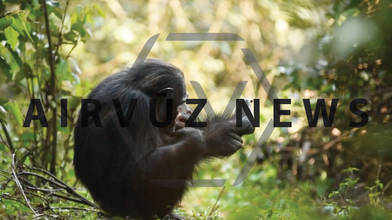
AV News: ConservationDrones.org
Published 12/12/2016 10:58The Conservation Drones Organization uses drones to collect data on wildlife and forests in Southeast Asia to inform them on challenges with conservation. Gathering this kind of data in the tropics isn't easy due to the environmental obstacles, however drones have made this an easier task. The data they collect is shared with local universities, zoos, and research foundations to help guide them in their own studies of conservation.
- almost 9 years ago
- 3.0k VŪZ
9 

- 4
- Report
It was just supposed to be a cup of coffee. Two professors, one an ecologist and the other a conservation biologist, discussed the effects the palm oil industry was having on the orangutan population in Southeast Asia. The two agreed; studying animals in the tropics is a very difficult task, one that takes a lot of time and financial resources. That got them thinking; what if there was a different better way to study their subjects?
“Now, orangutans make a nest every night and we thought if you could fly over the forest and take photos of those nests it would help enormously. We thought about using drones as a flying cameras if you like, and that’s how the idea was founded.” Serge Wich is a Professor of Primal Biology at John Moores University. He and Ecology and Conservation Professor Lian Pin Koh started using drones to study orangutans and tropical deforestation in February 2012. That's when they flew a $2000, custom-made, fixed-wing drone in North Sumatra, Indonesia. They say the UAV gathered thousands of high-quality aerial images and footage of forests and wildlife. An online news source ran a story about their work, focusing on the new, low-cost technology dubbing the aerial project “a conservation drone.” Shortly after, ConservationDrones.org was founded.
“At first, in 2011, people were a little hesitant. Even our colleagues were like ‘Why are these guys flying drones? They like flying or something. It will probably not lead to anything.’ Then as we started to show more results, people started paying more attention to it,” Dr. Wich said. Now, the nonprofit has over a dozen crew members based around the world. Dr. Wich says they have between 10 and 30 projects going on at all times.
With the addition of easy to use 3DR and DJI products, learning to fly is easy. The trickier part is teaching others how to use the data they’ve collected. “Both Lian Pin and myself are trying to bring that drone teaching to our universities. Where we both train students now to not only use drones but also to really focus on what you do with the data.” Universities, Zoos, and research foundations support the nonprofit, using the data they collect to study primates, cetaceans, deforestation, and more.
Their mission is to help developing tropics use UAVs for conservation and help raise public awareness of conservation challenges. Sharing footage with locals is one way of doing that. “It’s really amazing to show the footage of the forests that are next door to their villages and to try and give them an appreciation for those forests from that point of view and show them that those are the areas that the animals are from a different angle. I think by visualizing sort of forests in a different way we can also make it more attractive for them to protect those areas.” The professors’ overarching goal is to inspire other scientists to adapt emerging technologies for conservation. “I think one of the things I really like about working with drones is that it brings an animal behavior biologist like myself in contact with people from different fields. Because of the drones, I work with engineers, and because of the data, we need to analyze I work with people from computer vision and astrophysics that all help with this. So it’s really nice to see a tool, what a drone basically is, lead to very interesting scientific collaborations that will hopefully do good for the world.” For more information, visit conservationdrones.org.
Follow AirVūz News for the latest updates in the drone community.
Up Next
FPV Pilots to Watch - 11/28/25

- AirVuzFPV
- 22 VŪZ
0 - 0
- about 6 hours ago
Drone Video of the Month, November (2025)

- Drone Video Contests
- 392 VŪZ
1 - 1
- 2 days ago
Drone Video of the Week, Episode 47 (2025)

- Drone Video Contests
- 249 VŪZ
1 - 0
- 4 days ago
FPV Pilots to Watch - 11/21/25

- AirVuzFPV
- 281 VŪZ
0 - 0
- 7 days ago
Announcing: AirVuz 2025 Drone Video of the Year Contest

- AirVūz Official
- 339 VŪZ
7 - 4
- 9 days ago
Drone Video of the Week, Episode 46 (2025)

- Drone Video Contests
- 649 VŪZ
1 - 1
- 11 days ago
FPV Pilots to Watch - 11/14/25

- AirVuzFPV
- 403 VŪZ
0 - 0
- 18 days ago
Drone Video of the Week, Episode 45 (2025)

- Drone Video Contests
- 901 VŪZ
1 - 0
- 18 days ago
FPV Pilots to Watch - 11/07/25

- AirVuzFPV
- 287 VŪZ
0 - 0
- 22 days ago
Drone Video of the Week, Episode 44 (2025)

- Drone Video Contests
- 749 VŪZ
1 - 1
- 25 days ago


